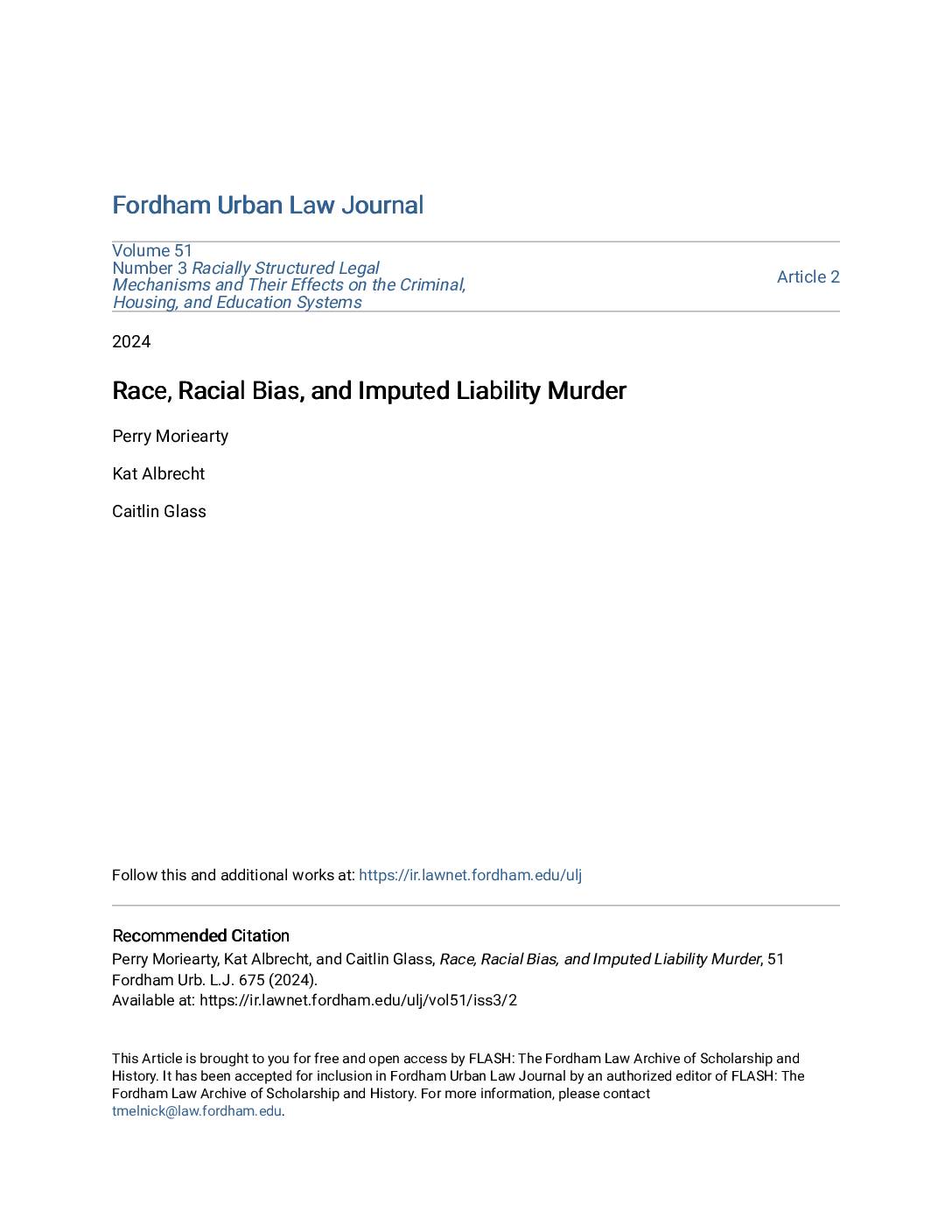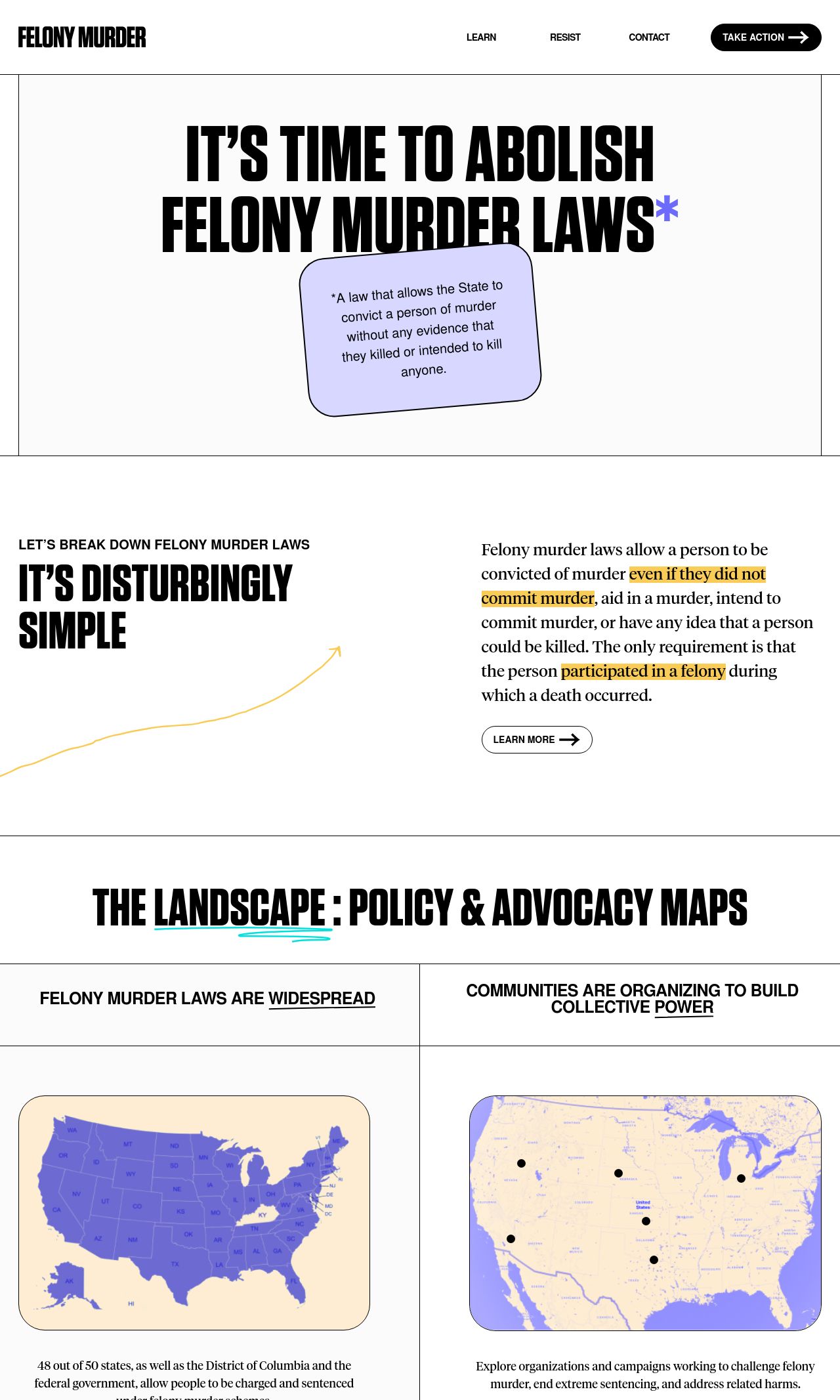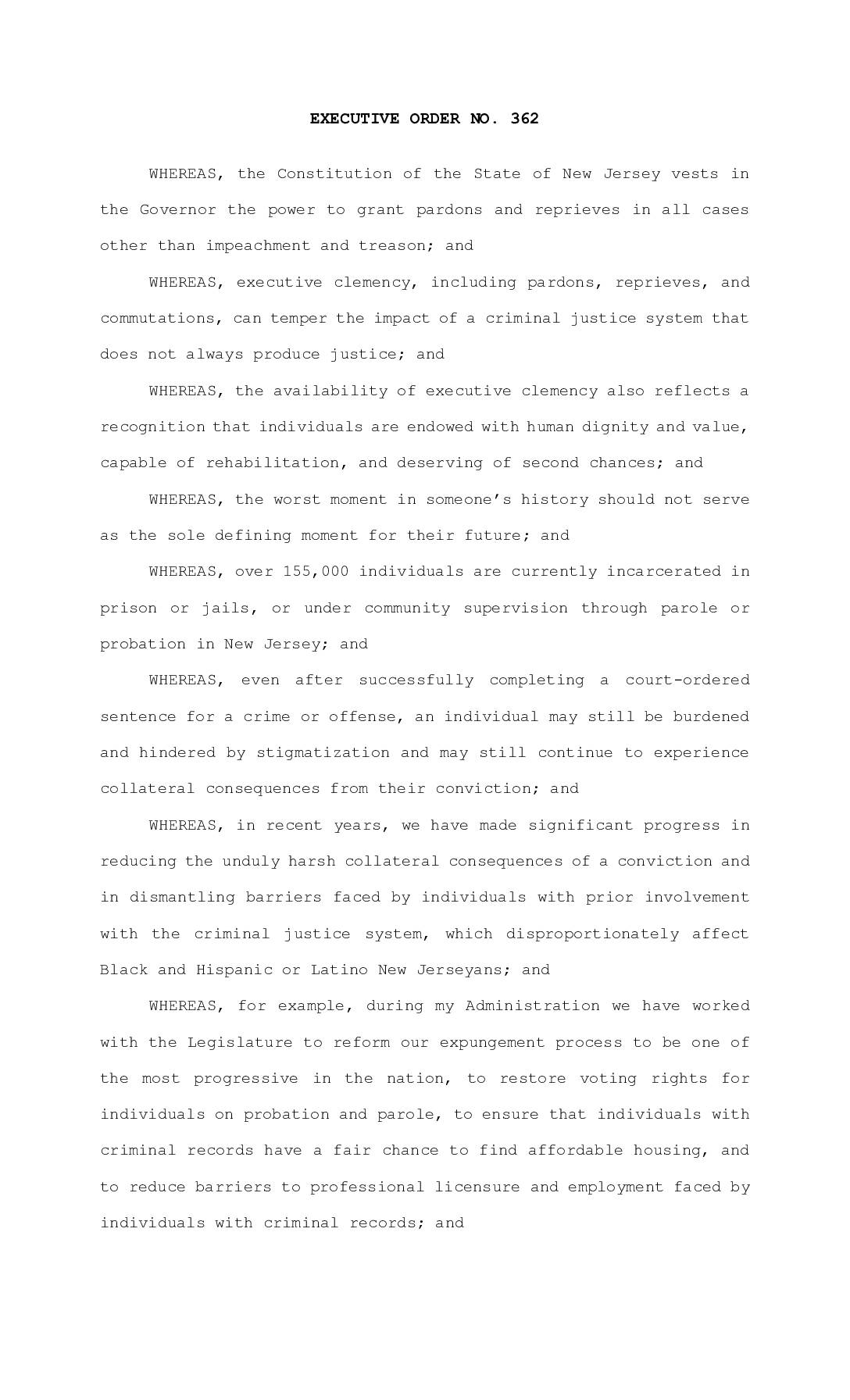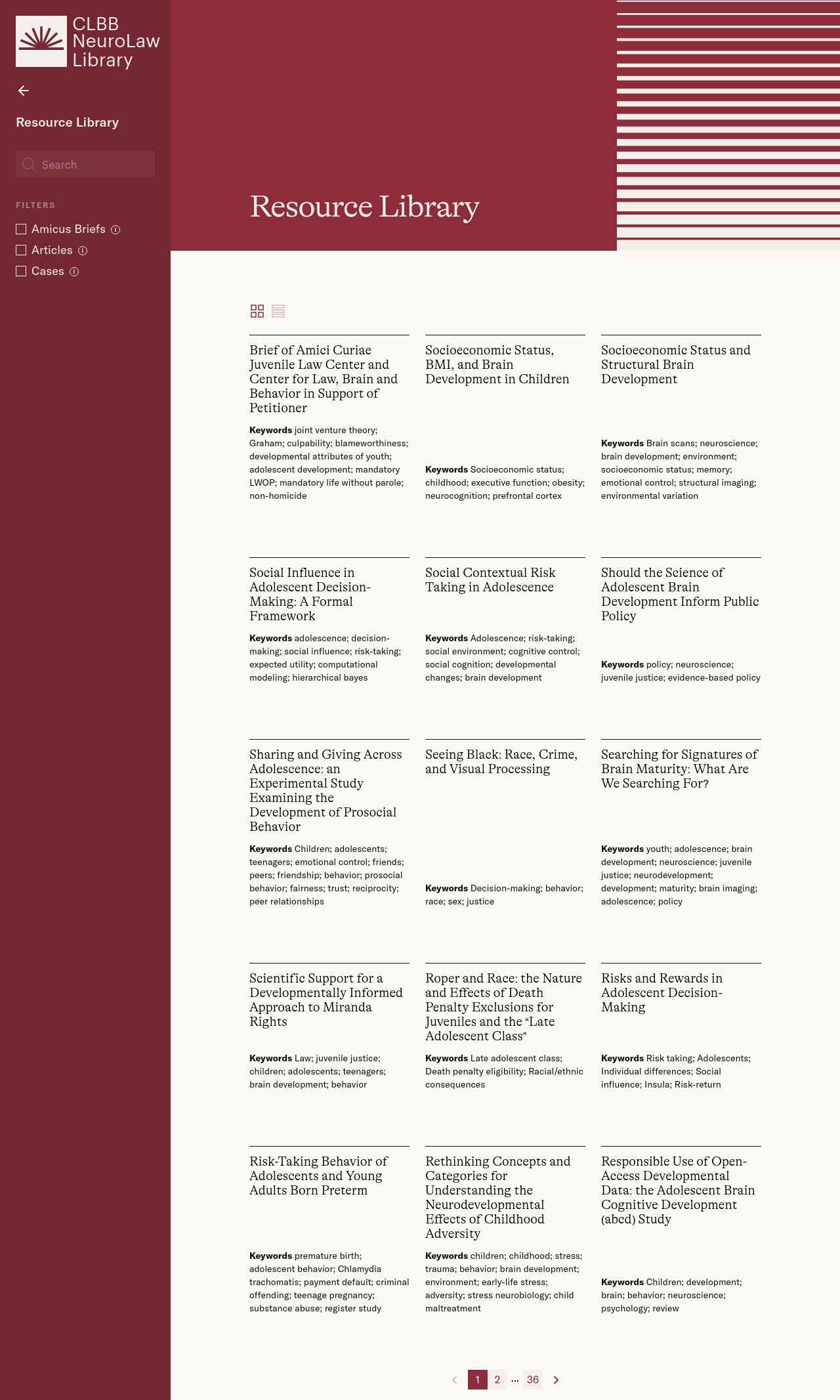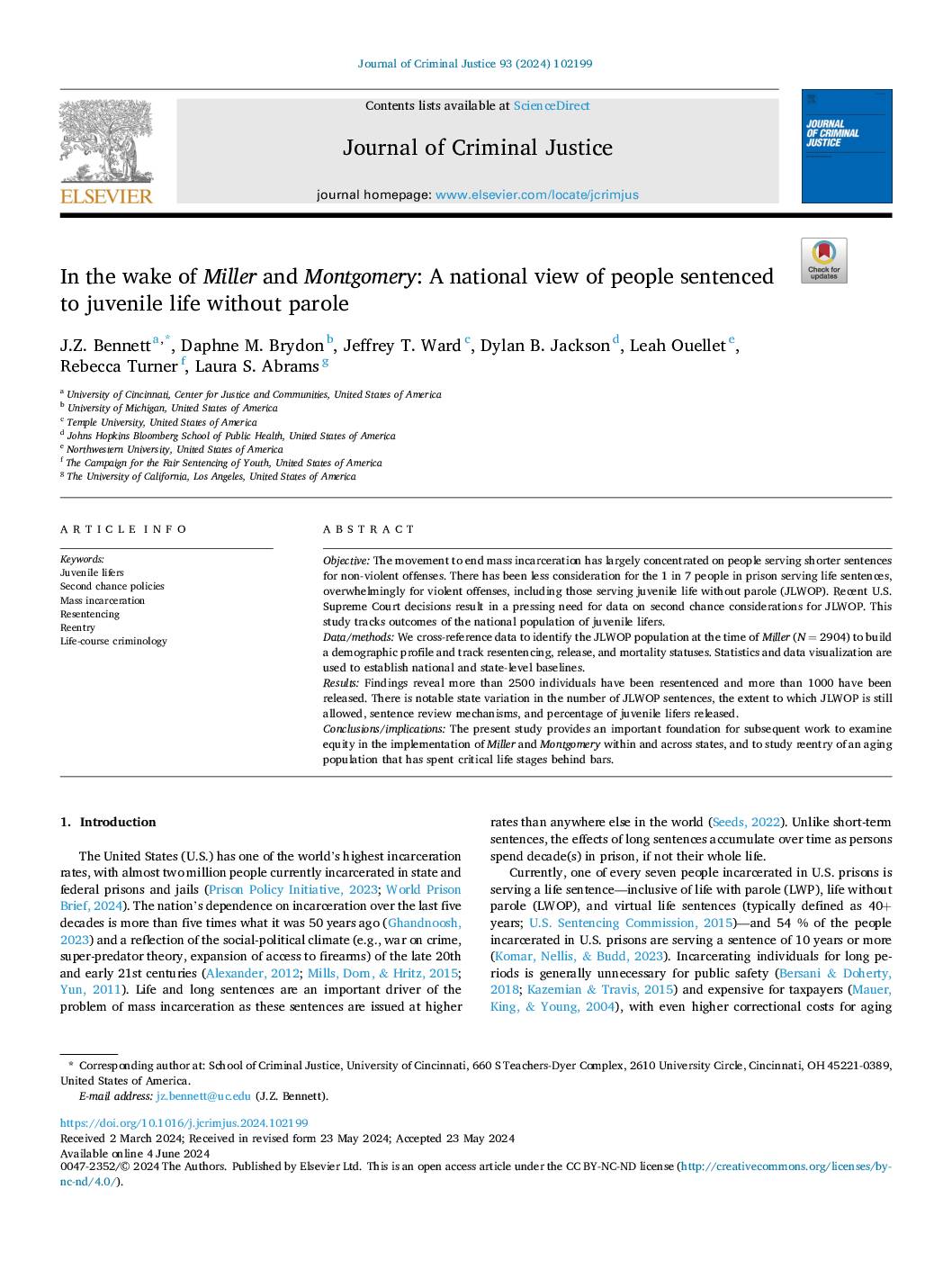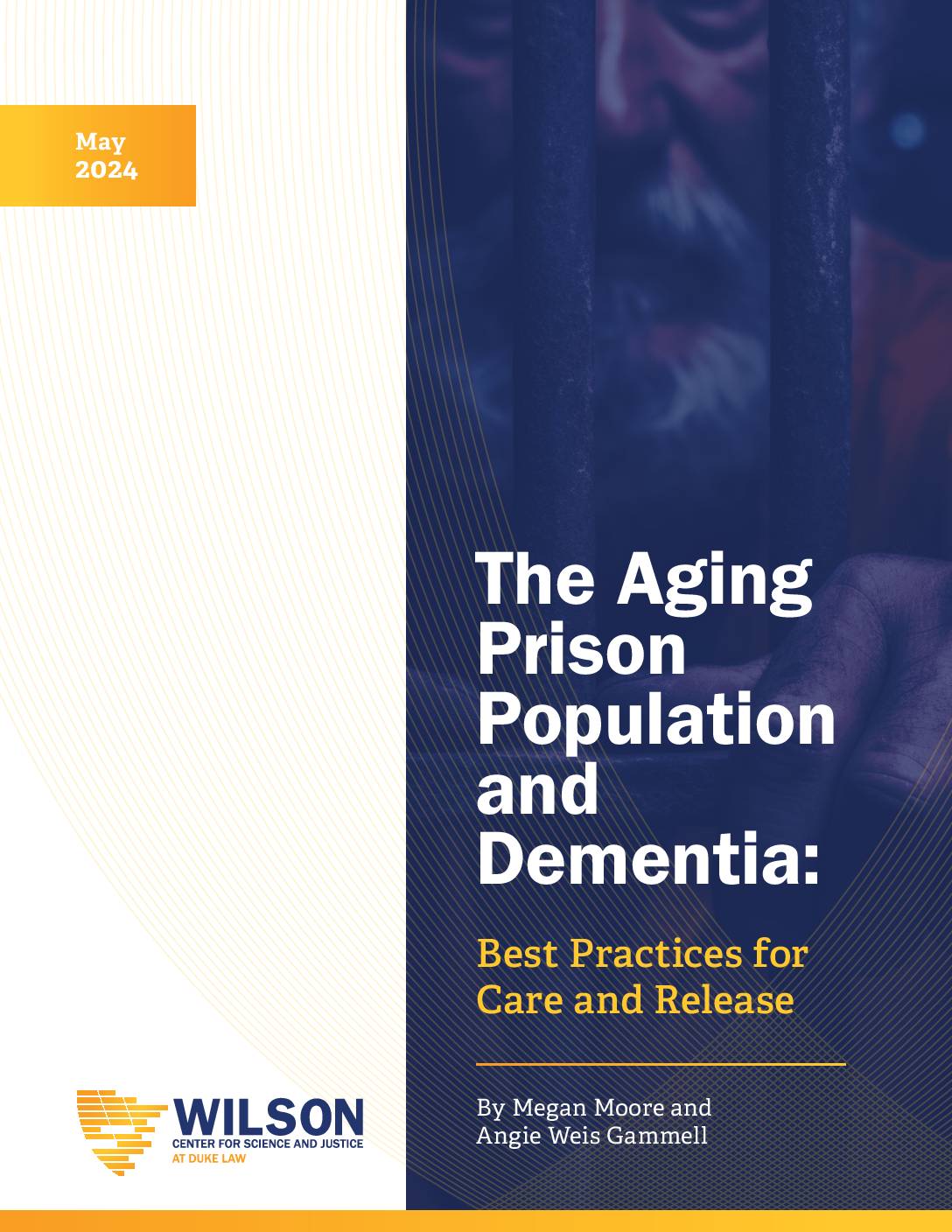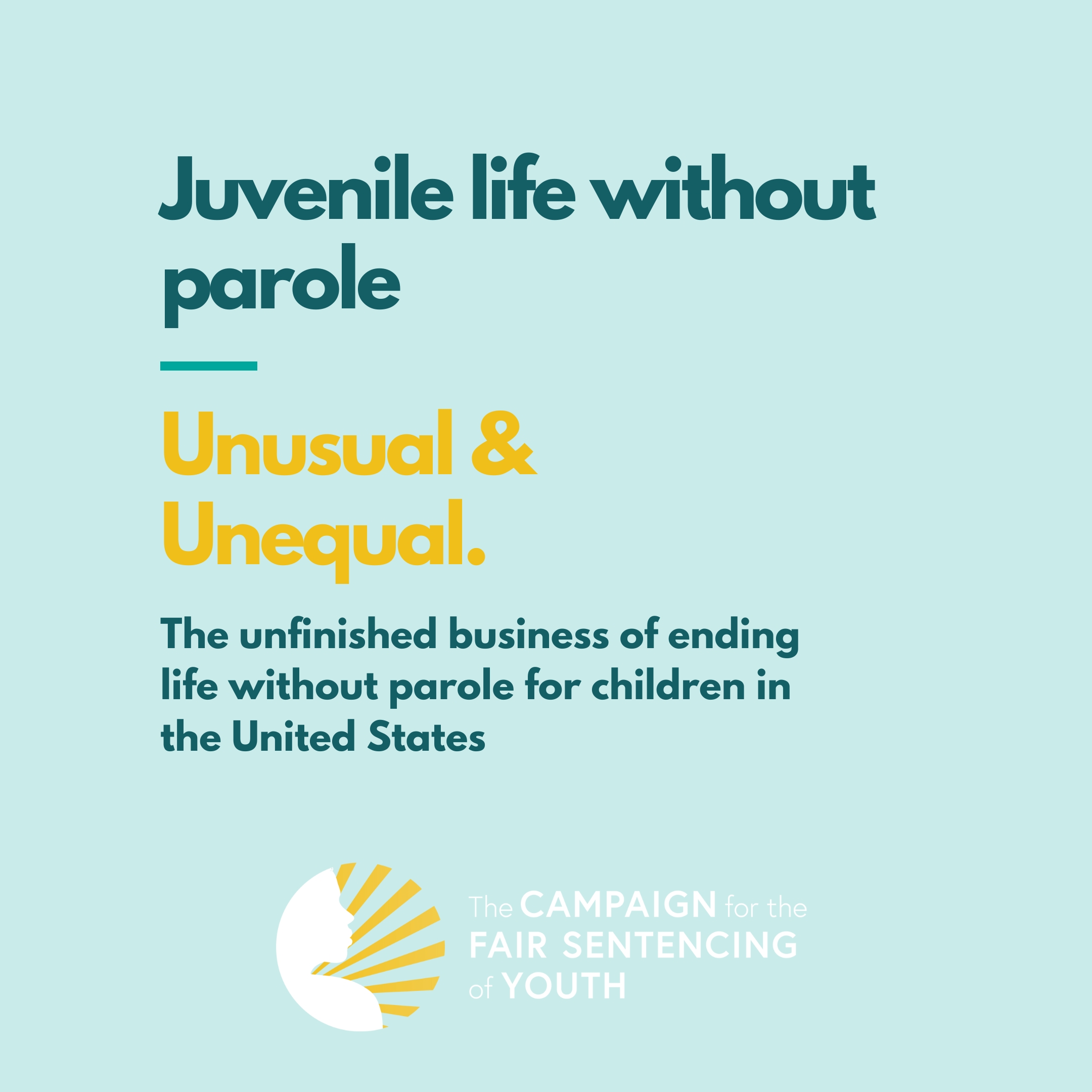PDF Race, Racial Bias, and Imputed Liability Murder
This law review article analyzes ways that racial bias may influence felony murder and accomplice liability murder prosecutions. It includes an analysis of data from Minnesota, though the arguments are more broadly applicable.


